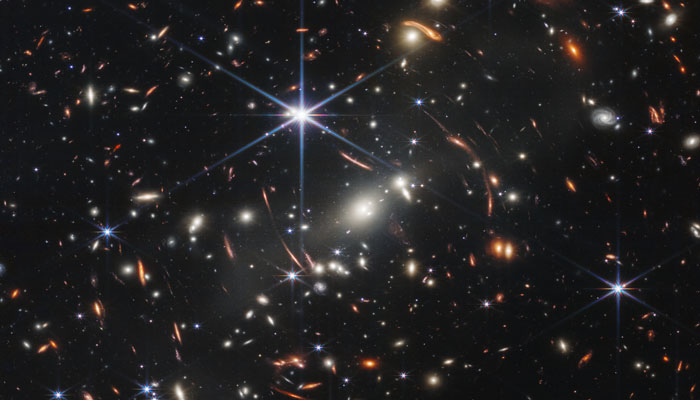Euclid mission expected to reveal true nature of dark matter, dark energy
These are invisible and were only detected by behaviours of spatial objects like stars and galaxies
June 19, 2023

Scientists are all set to send a European mission named Euclid into space to learn more and gather information about the two most dominant components which are dark matter and dark energy, which remained a mystery for decades.
The name dark energy was given to the force which was discovered in 1998, responsible for the universe’s expansion while dark matter — which is all over the cosmos — provides the universe with 80% of its mass, and acts as a binding force that holds galaxies together.
These are invisible and were only detected by behaviours of spatial objects like stars and galaxies.
Astrophysicist Professor Andy Taylor of Edinburgh University noted: "We cannot say we understand the universe if the nature of these dark components remains a mystery. That is why Euclid is so important."
The professor also said: "Euclid, has now been designed, built and is ready for launch."

Euclid is set to launch on SpaceX's Falcon 9 rocket on July 1 and in a month, it will cross the solar system before reaching its destination 150 million km from Earth — at a position known as the second Lagrange point.
"Euclid has the resolving power of the Hubble space telescope but will be able to survey a third of the night sky at the same time, so it will give us an incredibly detailed map of the heavens," the astronomer Stephen Wilkins, of Sussex University, said.
"Such precision will be crucial in uncovering the secrets of dark matter, which cannot be seen directly because it is most probably made up of particles that do not emit, reflect or absorb light," according to scientists.
Euclid — named after the ancient Greek mathematician and founder of geometry — will be performing its assigned tasks with the help of gravitational lensing which involves snapping millions of images of the galaxies.
It occurs when million of pictures of galaxies are snapped as the light passes through the dark matter reaching Earth. While travelling, the dark matter’s gravitational field affects the path of the light showing distorted images
"Gravitational lensing produced by dark matter will tell us a great deal about what it is made of," said Prof Mathilde Jouzac of Durham University.
“It may be that dark matter is made up of light particles. If so, they will produce one kind of lensing. On the other hand, if dark matter is made of very large particles, that will produce a different set of lensing. This information will then help direct the search for dark matter particles on Earth."
“We will peer further into the universe and further back in time and study how big it looks at different periods. In that way, we can actually work out how the size of our universe is changing over time and understand when changes in its expansion rate occur."
"The point of Euclid is really to get the data that will allow us to start discriminating between which of the different ideas we have about the dark universe," said Taylor.









